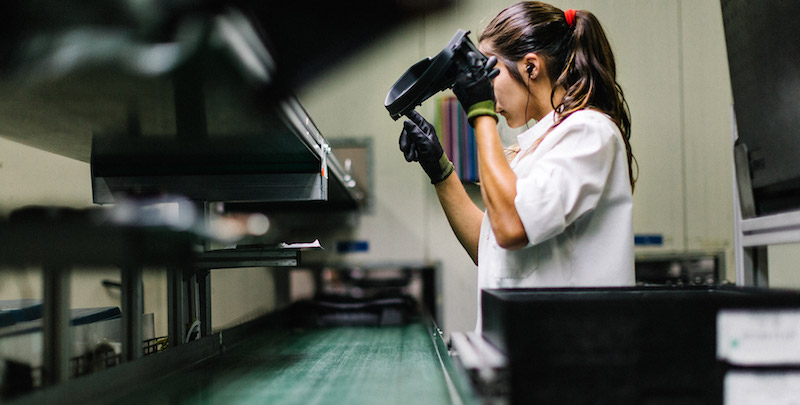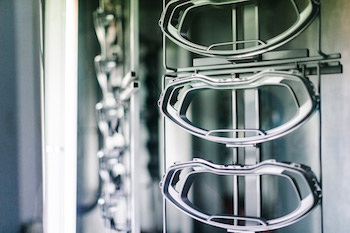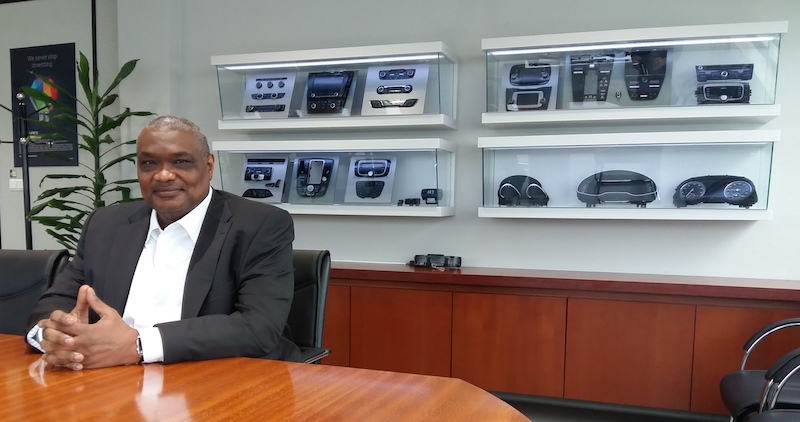Expertise in plastic component manufacturing will be in ever greater demand during the emobility age. In preparation, global supplier Novares has taken on a new form
 Following a period of reorganisation and rebranding, the Mecaplast-Key Plastics group spent 2018 settling in to its new identity – Novares
Following a period of reorganisation and rebranding, the Mecaplast-Key Plastics group spent 2018 settling in to its new identity – Novares
The chosen name intentionally references innovation and the company, whose revenues amounted to €1.2 billion in 2017, naturally remains keen to present its continuing credentials and expertise in automotive plastic engineering and manufacturing.
Working in a material that is crucial in this age of cleaner, lighter, more connected, and user-friendly cars, Novares is taking the chance to strengthen its global footprint and reposition itself for the key market opportunities with OEMs and tier one suppliers, worldwide.
Novares is perfectly positioned to respond to the challenges and opportunities of today’s global market, which is shifting to lighter vehicles and components, global supply chains and hybrid and electric vehicles. It is also ready to exploit the new growth areas of smart surfaces inside cars and the rapid expansion of autonomous driving capabilities.
AMS visited the Leiria facility, located around about 150km north of Lisbon, Portugal. With about 630 people employed there, the main products are instrument clusters and lenses. Principally, the Leiria plant serves the tier one markets across Europe. The likes of Continental, Bosch, Visteon, Faurecia and more. Something like three quarters of their products are transported outside of Portugal, and even Iberia. The reach is as far as Germany, Czech Republic and there’s quite a lot of supply into eastern Europe.
Plant director Gilberto Landim confirms, the products tend to be destined for premium lines. For example, in the VW Group, Audi and Bentley were the principal vehicles where we would find the bezels and clusters produced at Leiria.
“We have technologies that allow us to go in that segment.” Landim says, “For example, one of the things we are producing is a high gloss bezel for the Audi A6, A7, and it’s a very difficult part. [to produce]”
There’s quite a story to it. Landim says that when they first began making the product some years ago, such were the difficulties in getting the high gloss finish right, that the scrap rate was alarmingly high.
“We talked to the customer and said, ‘hey, we are finding this so complicated. Maybe you should get another supplier to split the volume’.”
But the team persevered and managed to solve the problem with some reconfiguring within the paint equipment and process. From a time when it proved difficult to supply 200 per week. Novares could now supply 1,500 to 1,600 per day.
Landim declares: “We are recognised in Europe now as experts in painting high gloss. One OEM even puts this in the drawings ‘recommended supplier for high gloss – Novares’. But it was good for the customer and for us because we could solve the problem and they didn’t find another supplier for that at a competitive cost.”
 Novares found racking components vertically and maintaining distance either side avoids overspray problems
Novares found racking components vertically and maintaining distance either side avoids overspray problemsA dash of colour
While the high gloss finish takes place within a closed cell, away from human gaze, we were able to see the injection mould area, the paint shop and the assembly area. It’s quite an extensive injection moulding process – number of lines, going from 25 to 500 tonne machines. They can perform single two shots or three shots for the base colour, and for example a red and a blue. This is of course for climate control buttons, a familiar combination of colours that a three-shot injection mould delivers.
In the paintshop, operatives take care of vertical and flatbed machines and around 50% of the operations are on this high gloss finish mentioned earlier.
Notably, there’s a shift underway switching from solvent-based paints through to water-based. Consequently, one consideration the team has to make is overspray. With water-based paints the overspray is a lot more widespread.
The team showed me how they were getting around this by racking components vertically and maintaining good distance either side. This meant the components were still getting the proper finish but there was no overspray affecting the rack that had just passed through or the rack that was about to enter in front of the robots.
Landim adds, “We also have one machine that is applying hard-coat. Today, more and more customers are requesting hard-coat. And we have also decorative systems like hot stamping, silk screening, chroming. But chroming we subcontract, we don’t do chroming here. We integrate only.”
 Novares Leiria Plant Director Gilberto Landim
Novares Leiria Plant Director Gilberto LandimSelfmade solutions
Landim says, “We use a systematic usage of errorproof, poka-yoke, and each station we guarantee that the quality is okay to pass to the next station. That reduces the possibility of passing the defect to the end. It costs much more than if you catch it in the beginning.”
Landim places great importance in his own team’s capability of developing manufacturing systems: “When you buy the line turnkey, if you have problems then the flexibility to improve something or to change is more difficult. But for us, it’s good because we have people inside who not only have ideas, but also implement them.”
The team designs the assembly lines internally, according to the product needs or requirements: “We have automated or manual assembly lines, depending on the volume, the type of products. And we use always the lean manufacturing approach. If we need more products we increase people and produce more. If we need less, we reduce people and produce less. Always with the same efficiency, the same output per person.”
Landim has a team of engineers who design and build much of the cells and lines. So as product lines change and as ideas come along, the team can change the mix of the manual and automated processes.
It was interesting seeing the homegrown solutions. One such example concerned a small jig of control buttons for a cluster. The jig was about the size of a CD cover and held about 20 or so buttons. The jig had carried the buttons through the paintshop and, naturally, had received a coat of paint just as the buttons had.
However, once they arrive in assembly the jigs need to provide a light for the purposes of the visual inspection process. The team in the assembly line came up with this quite natty solution where the dark jig is delivered to a small cell and flipped. The buttons are transferred to a new white jig. The team admit that this took some time to perfect but it made a big difference.
It means that they can use the correct jig in the correct station and maximise both those processes, all for the sake of a small intervening solution that they came up with themselves.
Landim proudly recognises that the continuous improvement is a internal culture at the Leiria plant: “Every time we are improving. And it’s not in the hands of the management – everybody applies, everybody contributes to the continuous improvement.”
“Toyota, Volkswagen, Ford, etc. they come here to see our operations. It’s a way also for our customers to sell to their customers.”
Quality 4.0
When it comes to laser engraving on instrument cluster control buttons, Novares receives very tight micron-specific instructions from customers. Working with a German supplier, Novares created a poka-yoke system where cameras fitted inside the laser cell monitor the position of the part before committing to engraving. Should any part feed through but not come to rest in the correct position the camera alerts the system. It means the blank part is moved out, unspoiled, and returned to the feeder bin. It’s reduced scrap as engraving only takes place on parts that are correctly positioned.
A key quality test for the laser engraving on instrument control parts has now been almost entirely automated. It has an array of advantages over the previous naked-eye method, where a worker would enter a dark booth and view the jig of engraved buttons by activating a backlight beneath the jig.
The tester would check for inaccuracy or contamination in the engraving. However, the task was ripe for automation with the capabilities of machine vision to more accurately measure and record the status of the parts being processed. Additionally, the strain on the human eye searching for fine detail against such contrasting light conditions made it an unenviable task.
Novares Leiria plant director Gilberto Landim explains: “It’s not possible to check this way effectively, even if you rotate two workers in two hours. If we had problems I never blamed the operators. I always said it’s our fault as managers and we have to find a way. So now we can check with high intensity white lamps, test for colour and transmission, the right components in the right place. We check the graphic position and graphic size with 100% automatic inspection.”
Testing, and the recording of the results, is a vital step in customer relations. In the past, if a component – a button, say – was reported by a customer as not working it was very difficult to trace the problem and the complaint had to be accepted.
Landim explains that the plant today has systems to protect itself from unfair complaints: “We test everything and when the part goes to the customer it goes with the barcode. If the customer complains, we take the barcode and look to the data.”
The traceability route means the plant is protected against bearing the brunt when damage to a part took place after production, preserving its good reputation and saving time and energy looking for answers when the reason for the damage lies elsewhere.





































